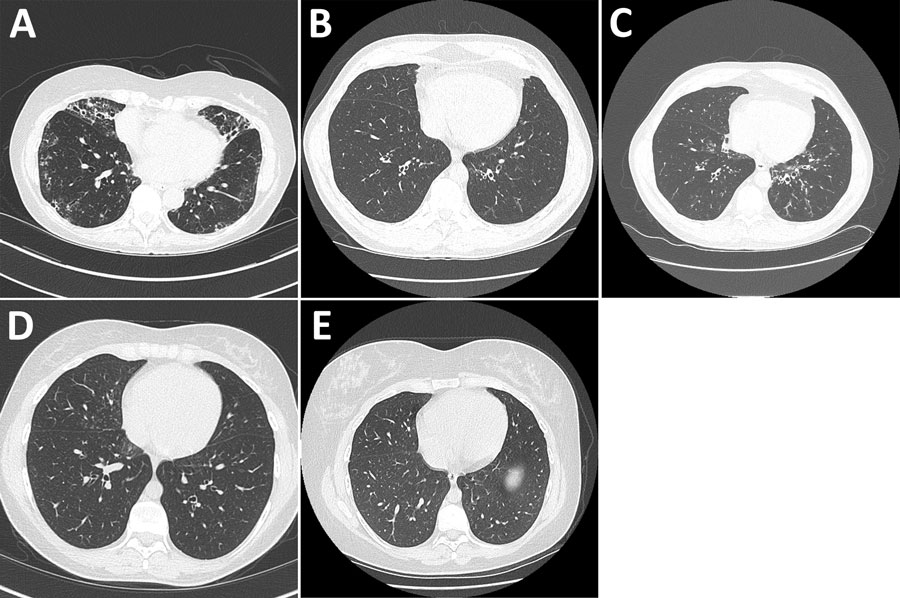Volume 31, Number 3—March 2025
Research
Mycobacterium nebraskense Isolated from Patients in Connecticut and Oregon, USA
Figure 1

Figure 1. High-resolution chest computed tomography scans from study of Mycobacterium nebraskense isolated from patients in Connecticut and Oregon, USA. A) Scan from case 2 in Connecticut showing bronchiectasis in the right middle and lower lobe, left lower lobe, and lingula and tree-in-bud nodularity in the lingula and right and left lower lobes of the lung. B) Scan slice from case 3 in Connecticut through the lower lung lobes showing 1 borderline dilated airway in the left lower lobe, performed in May 2019. C) Scan slice from case 3 at the same anatomic level showing numerous dilated airways and airway wall thickening in the left lower lobe of lung, performed in April 2020 soon after the first isolation of M. nebraskense. D) Scan from case 4 in Connecticut showing tree-in-bud nodularity in the right middle and lower lobes of the lung when patient had M. nebraskense isolated from her sputum in August 2020. E) Scan from case 4 in Connecticut showing resolution of the tree-in-bud nodularity in the right middle and lower lobes of the lung, performed in December 2022.